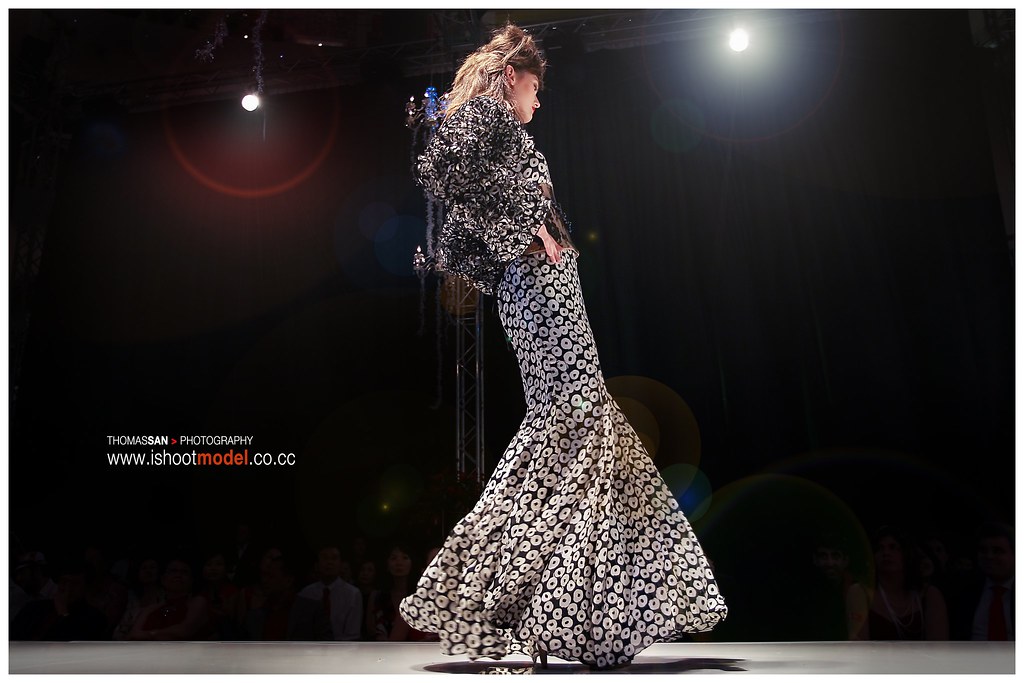What focus length is consider wide-angle?
Well, on a full frame body, any focus length between 14mm to 21mm are consider wide-angle. Focus length shorter than 24mm often refers to as Ultra wide-angle and some intentionally distorted lenses are classified as “Fish-eyes” lens.
A good example of an excellent Ultra Wide-angle lens is the famous Canon EF 16-35mm f2.8L II USM
For crop body (depending on the crop factor), lens such as the Canon EF-S 10-22mm
I would like to share some tips on using the wide-angle lens for portrait/ fashion shots:-
Tips #1: Creatively use of the distortion effect, don’t over do it!
Many photographers like to place the subject or model at the edge of the frame in order to create a much “taller” & “elegant” feel by taking advantage of the lens distortion. This is one of the popular techniques employed by many amateur and professional portrait photographers in their works.
Using this technique carefully can make your model look much taller but be mindful of the following:
(a) Caution not to create a “Big Foot” at the edge of your frame
(b) Perspective – pay attention to the model’s head and shoulder and keep a reasonably good and well balance head and body shot.
Try placing the model’s upper body to the center of the frame to avoid distortion on perspective and avoid placing the lower body too close to the edge of the frame. Remember, we intend to create an elegant tall looking model
Mixing a few intentionally distorted photos is another great ways to create interest for you viewers but don’t over do it!
Tips #2: Depth of field – Bye-bye Bokeh!
Newbie and amateur alike prefer to create a very shallow depth of field (bokeh effect) when comes to portrait shots. While it’s completely understood why we all like to do it but doing so for every photos is kind of boring for your viewers.
Many years ago, I heard of this interesting story where an amateur photographer spending thousand of dollars traveling 4 hours on flight to a paradise for his portraiture assignment but all photos are with a very shallow depth of field thus no one recognize the place!
So if you like “Bokeh”, wide-angle may not be your cup of tea!
Shooting with a wide-angle lens will maximize your depth of field increasing your range of focus. The background and the subject both remain sharp and clear!
A wide-angle lens allows you to capture the subject against an environment and makes your model part of the environment. As such, choosing a suitable background for your shots is extremely important.
Avoid busy background is the golden rule!
Tips #3 : Keep a distance – Not close but up close!
To avoid distortion don’t put the lens too close to the subject especially their face unless you intended to create an overly distorted portrait or emphasize a certain point of interest! Otherwise, keep a distance.
Wide-angle lens are not meant to go in close but to catch the scene “up close”!
The above shot was taken at about 1.5 meters away from the stage. Sometime you may need to walk close to the stage and adjust the angle of view to capture some really nice wide-angle shots of models in action. But be considerate not to block the photographers standing behind you as you may run a risk to blocking their shots!
When using a wide-angle lens for outdoor portraiture work, you most likely be working much closer to your subject than with a standard zoom lens.
At times, the working distance is reduced from about 10-15 feet to as close as 1-3 feet when working up close. Generally I recommend staying in the 3-5 foot range. Since you are working so close to the subject you must make sure they are comfortable, especially if you are first time working with the model. To make your subject even more relaxed, give them something to do in front of the camera and tell them to forget about you.
I hope next time you are out in the field trying practicing some of these tips and hopefully you able to share your experience.







No comments:
Post a Comment